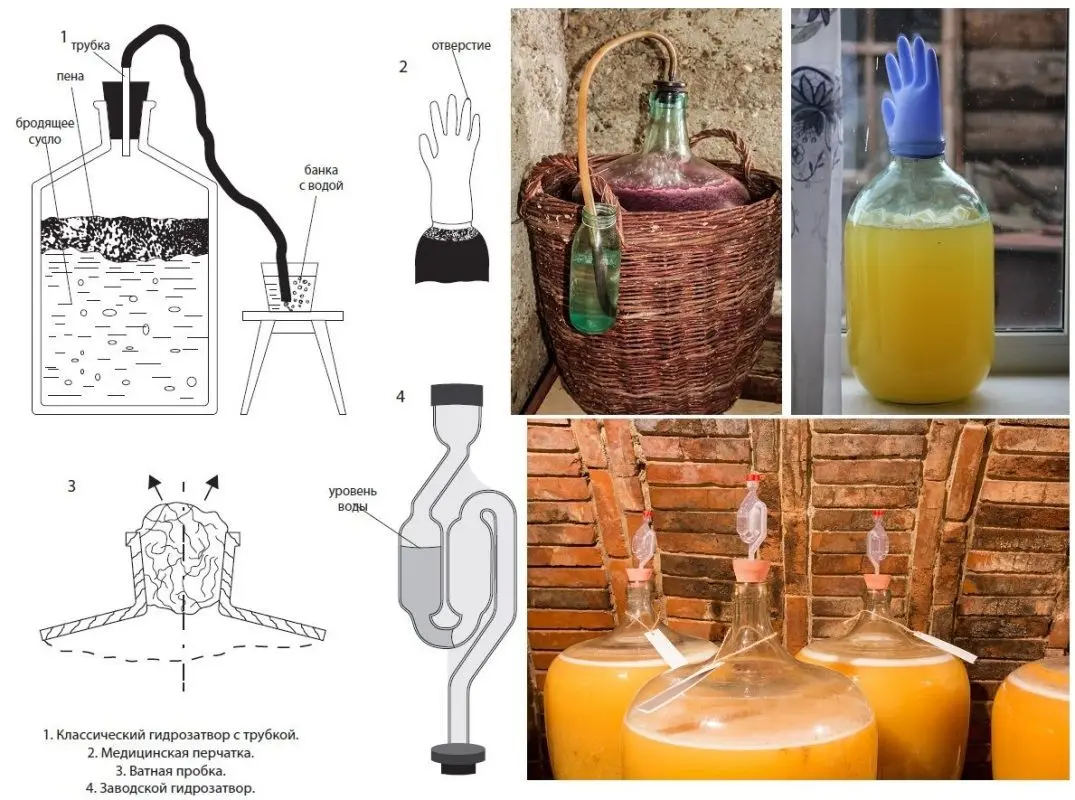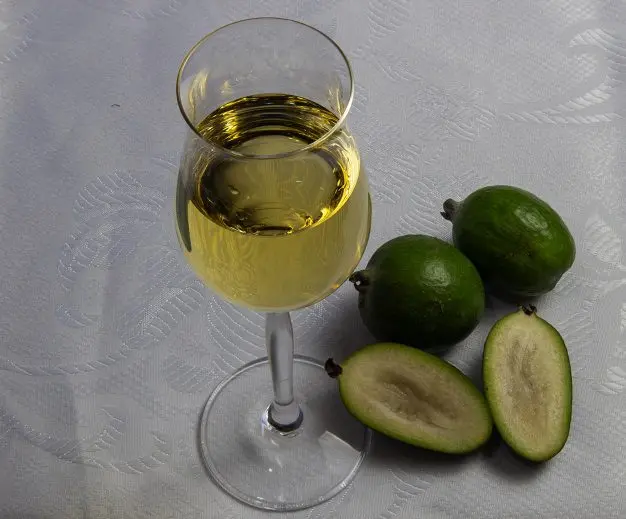One of the most exotic drinks that can not be found on sale. Homemade feijoa wine has a weak aroma, but it has an original, difficult to compare taste. If there is enough raw material, I advise you to make at least a small batch for testing. We will consider the recipe and the complete cooking technology.
Ripe feijoa of any variety is suitable for winemaking. It is important that the fruits are free from rot, mold and blackened parts, since even a small amount of spoiled raw materials can spoil the entire batch of the drink. In order not to infect the wort with mold and other dangerous microorganisms, the containers used must be sterilized with boiling water and wiped dry with a clean, dry cloth.
Ingredients:
- feijoa – 2 kg;
- sugar – 1 kg;
- water – 3 liters;
- citric acid – 6 grams per 1 liter of must;
- wine yeast or homemade sourdough – for 5 liters of must.
Citric acid in bags (needed for normal fermentation and a balanced taste of wine) can be replaced with freshly squeezed juice – one medium-sized lemon contains 5-6 grams of acid.
Attention! If, instead of sourdough or wine yeast, you add ordinary pressed or dry bakery (alcohol) yeast, you will get not wine, but mash.
Feijoa wine recipe
1. If there is no wine yeast, 4-5 days before working with raw materials, make a starter from raisins, grapes or other berries. More details at the link.
2. Put the washed and dried feijoa berries in a bag and send to the freezer for 2-3 hours, then remove and defrost. The stage is optional, but under the influence of cold, additional sugars are formed in the pulp, which contributes to fermentation and the formation of taste.
3. Peel the fruits. Crush the pulp (with your hands, a blender or a meat grinder), then put it in a plastic or enameled container with a wide neck – a pot or bucket. Add water, 300 grams of sugar (one third of the total). Add wine yeast or sourdough. Mix.
4. To protect against insects, cover the container with gauze or a dense cloth, transfer the wort to a dark room with a stable temperature of 18-28 °C. Leave for 3 days. During the first 4-12 hours, signs of fermentation should appear: foam, a characteristic sour smell and hiss. This means that everything is going well.
Every 8-10 hours from the moment of introducing the starter (yeast), mix the must with a clean hand or a wooden stick, drowning the pulp in the juice – the flashed particles of pulp. Without stirring, souring is possible.
5. Filter the wort through several layers of gauze, squeeze the pulp dry (no longer needed).
6. Add citric acid (6 grams per 1 liter of wort) and 300 grams of sugar (one third of the total) to the liquid part. Mix.
7. Pour the wort into a fermentation tank. Fill to a maximum of 75% of the volume to leave room for another serving of sugar, foam and carbon dioxide. Install a water seal of any design on the neck of the vessel; you can attach an ordinary medical glove with a hole in one of the fingers (pierce with a needle). Transfer the container to a dark room (or cover with a thick cloth) with a temperature of 20-28 ° C, leave until the end of fermentation.

8. After 7-8 days, add the remaining sugar – 400 grams (according to the proportions in the recipe). To do this, remove the water seal, pour 200 ml of fermenting wort into a separate bowl, add sugar, mix, then pour the resulting syrup back into the fermentation tank and close it again with a water seal.
Depending on the activity of the yeast and the temperature, fermentation of homemade feijoa wine lasts 35-60 days. The end of the process is indicated by the absence of gas from the water seal (deflated glove), clarification of the wort and a layer of loose sediment at the bottom.
If fermentation does not stop 50 days from the date of installation of the water seal, you need to drain the drink from the sediment and leave it to ferment under the water seal under the same conditions, otherwise bitterness may appear if it stays on the sediment for a very long time.
9. Pour the fermented young wine through a straw into another container, without affecting the sediment at the bottom. Try a drink. Sweeten with additional sugar to taste if desired and stir. You can also fix with vodka or alcohol in an amount of 2-15% of the volume.
10. Pour the wine into aging containers, preferably filled to the brim to avoid contact with oxygen, which causes oxidation. Close tightly and transfer to a refrigerator or cellar with a temperature of 2-16 ° C. If sugar was added at the previous stage, keep the drink under a water seal for the first 7-10 days in case of repeated fermentation.
11. Keep the wine for at least 4-6 months to improve the taste. When a precipitate appears in a layer of 3-5 cm (at first once every couple of weeks, then less often), filter by pouring through a tube into another container. The drink is ready when there is no significant sediment for a couple of months.
12. If desired, the finished feijoa wine can be bottled and hermetically sealed. If stored in a refrigerator or cellar, the shelf life is up to 3 years. Fortress – 10-12%.










